World population 2011
7 billion people on Earth in 2011
Future population growth in the world, is difficult to estimate accurately. Still many organizations publish forecasts, based on the rate of birth and many other indicators, also estimated. These projections are revised from time to time, based on updated information and improved modeling techniques. However, most estimates predict that world population will be between 8 and 10.5 billion in 2050. Inevitably, this will increase the unbearable pressure on food resources, water, fossil fuels and other limited resources consumed by human populations. Projections made by these organizations require a certain continuity deliberately ignoring the disaster scenarios. When did this happen catastrophe, i.e. the sharp decline of the world, no one can predict when and how this will happen and what will be the trigger event (war, epidemics, climate, earthquakes, volcanoes, crisis world trade,...).
Mankind already uses too much natural resources and the pace continues unabated. This puts unsustainable pressure on the natural environment and ecosystems on which we depend. Yet humanity is making efforts, the birth rate in the world is down slightly. In developed countries it is below the replacement level, but in developing countries, they are usually well above. Agriculture uncontrolled waste water, the raw materials and fossil fuels, the plundering of the seas, the massive destruction of plant and animal species, will they not end up depleting the planet?
However, a rapid decline in fertility is underway in all countries and particularly in developing countries. Despite the decline in birth rates, it is difficult to believe that the curve will be reversed in the years to come.
Once again it will take the human race adapts quickly to environmental context without reaching the state of overcrowding that would produce a Malthusian catastrophe. Malthusian catastrophe means a demographic collapse following an exponential growth population and is due to the depletion of resources, following to this growth.

Image: Curves the number of children per woman.

Image: In 2050, with a fertility rate of 2.7 children per woman, world population would reach 11.8 billion people.
The scenario "high", 10.7 billion (fertility of 2.35), the "average" scenario 9.1 billion (2.1 fertility - for the replacement of generations), the scenario "low", 7.7 billion (fertility 1.85 - rates adopted by the United Nations).
Source: United Nations.
80 million more per year
This increase of 80 million people a year, is still the estimated average in 2011, this equates to roughly, to add on our planet, the population of a country like Germany, every year.
Image: Profile created by referring to the figures of world population estimated for 2009, INED (National Institute of Demographic Studies) and the World Population Prospects.
NB: These figures are of course only estimates because the margin of error is important, it is due to the difficulties of identifying people.In some countries, one third of births does not give rise to any official statement.
| births since 01/01/2009 | death since 01/01/2009 | |
Image: These figures show the number of births and deaths world since the beginning of 2009.

2011 estimated population
| Population (in millions) | Children per woman | Percent growth rate | |
| WORLD | 6 988 | 2.51 | 1.1 |
| AFRICA | 1 056 | 4.38 | 2.2 |
| LATIN AMERICA | 594 | 2.14 | 1.0 |
| NORTH AMERICA | 354 | 2.01 | 0.9 |
| ASIA | 4 212 | 2.29 | 1.1 |
| EUROPE | 733 | 1.52 | 0.1 |
| OCEANIA | 36 | 2.41 | 1.3 |
| Sources | 2011 (millions) | 2010 (millions) | Growwth(millions) |
| INED | 6 946 | 6 866 | 80 |
| Population data.net | 6 916 | 6 833 | 83 |
| Worldometers | 6 894 | 6 816 | 78 |
| Terriens.com | 6 908 | 6 831 | 77 |
| World | 6 916 | 6 836 | 80 |
NB: 1 January 2011, there were about 6.916 billion people on Earth, 80 million more than in 2010.
We will reach the 7 billion people in late 2011 or early 2012.
The population of the Earth is growing by about 215,000 people daily, the approximate result daily balance of 365,000 births and 150,000 deaths.
Growth does not always slow in recent years.
 Origins of Earth: Magmatic Chaos and the Birth of the Solid World
Origins of Earth: Magmatic Chaos and the Birth of the Solid World  Earth's Atmosphere: The Invisible Shield Protecting Life
Earth's Atmosphere: The Invisible Shield Protecting Life  The Three Ages of Terrestrial Water: Multiple Origins
The Three Ages of Terrestrial Water: Multiple Origins  From Carbon 14 to Uranium-Lead: The Science of Dating
From Carbon 14 to Uranium-Lead: The Science of Dating  The Boundary of Space: Where Does It Really Begin?
The Boundary of Space: Where Does It Really Begin?  The Leap Second
The Leap Second  Planetary Alignments: A Fascinating but Relative
Phenomenon
Planetary Alignments: A Fascinating but Relative
Phenomenon  All Deserts of the World
All Deserts of the World  Earth's Paleoclimates and Carbon Dioxide
Earth's Paleoclimates and Carbon Dioxide  Three Gorges Dam and Day Length
Three Gorges Dam and Day Length  International Date Line
International Date Line  Start Date of the Seasons: A Complex Celestial Mechanism
Start Date of the Seasons: A Complex Celestial Mechanism  Reversal of the Earth's magnetic field over time
Reversal of the Earth's magnetic field over time  Simulator, the revolution of the planets
Simulator, the revolution of the planets  Earth's geological time
Earth's geological time  Earth History: Timeline Compressed into 24 Hours
Earth History: Timeline Compressed into 24 Hours  Ocean water from elsewhere
Ocean water from elsewhere  Reading the Sky: Understanding Declination and Right
Ascension
Reading the Sky: Understanding Declination and Right
Ascension  Inversions of the Earth's Magnetic Field
Inversions of the Earth's Magnetic Field 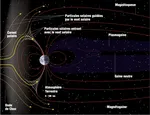 Earth's Magnetosphere: The Invisible Shield
Earth's Magnetosphere: The Invisible Shield 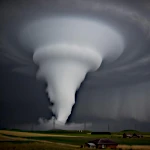 Fujita Scale: Classifying the Fury of Tornadoes
Fujita Scale: Classifying the Fury of Tornadoes  Earth's Radioactivity: The Internal Energy of Our Planet
Earth's Radioactivity: The Internal Energy of Our Planet  The Deep Sea: Exploring the Deepest Ocean Trenches
The Deep Sea: Exploring the Deepest Ocean Trenches  Why Are Days Getting Longer?
Why Are Days Getting Longer? 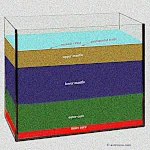 The Depths of the Earth: From the Lithosphere to the Core
The Depths of the Earth: From the Lithosphere to the Core  Earth's Movements: How Earth Traces Its Spiral Through the Universe?
Earth's Movements: How Earth Traces Its Spiral Through the Universe?  How much is the sea level rising?
How much is the sea level rising? 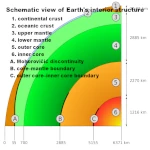 The Life of Earth: Structure and Layers of the Earth
The Life of Earth: Structure and Layers of the Earth  The Eccentricity of Earth's Orbit: An Ellipse That Changes
Everything
The Eccentricity of Earth's Orbit: An Ellipse That Changes
Everything  Little Ice Age: The History of a Natural Climatic Cooling
Little Ice Age: The History of a Natural Climatic Cooling  The Quest for Time: How Ancient Civilizations Used
Astronomy?
The Quest for Time: How Ancient Civilizations Used
Astronomy?  Van Allen Radiation Belt: A Shield Against Cosmic Particles
Van Allen Radiation Belt: A Shield Against Cosmic Particles  Axis of rotation of the planets or obliquity
Axis of rotation of the planets or obliquity 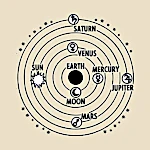 The Cosmos in Our Measure: When Man Invents the Universe
The Cosmos in Our Measure: When Man Invents the Universe  The Galilean Cut
The Galilean Cut  What is the pendulum fixed relative to?
What is the pendulum fixed relative to?  Problem of longitude at sea
Problem of longitude at sea 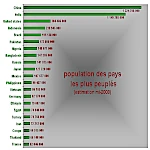 World population, still gallopingin 2008
World population, still gallopingin 2008  The Oldest Image of Earth from Space
The Oldest Image of Earth from Space 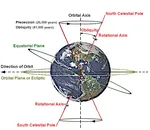 Earth's Obliquity and Variations in Its Axis of Rotation
Earth's Obliquity and Variations in Its Axis of Rotation  The Astronomical Unit Fixed: A Length, No Longer an Orbit
The Astronomical Unit Fixed: A Length, No Longer an Orbit  One Molecule, Three States: Solid, Liquid, Gas on a Single Planet
One Molecule, Three States: Solid, Liquid, Gas on a Single Planet  Simulator, the round of near-Earth cruisers
Simulator, the round of near-Earth cruisers  Satellites that measure underwater relief
Satellites that measure underwater relief  Hadean's Hell
Hadean's Hell  The First Free Flight of an Astronaut in Space
The First Free Flight of an Astronaut in Space  The first measurement of the Earth-Sun
distance
The first measurement of the Earth-Sun
distance  La The Announced End of the World on December 21, 2012: A Millennial
Prophecy
La The Announced End of the World on December 21, 2012: A Millennial
Prophecy The Equinoxes: An Astronomical Event
The Equinoxes: An Astronomical Event